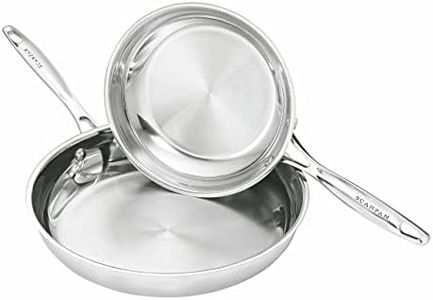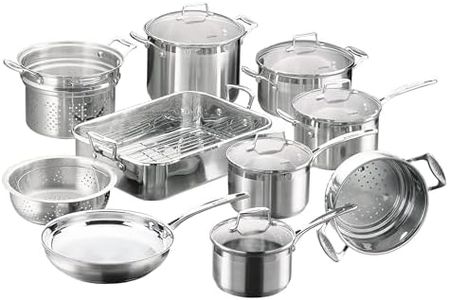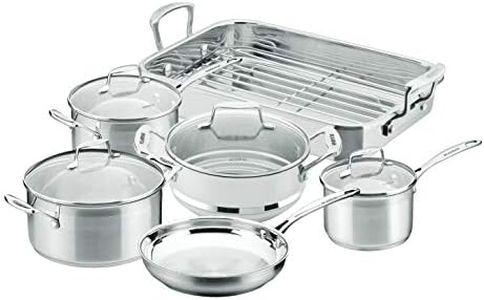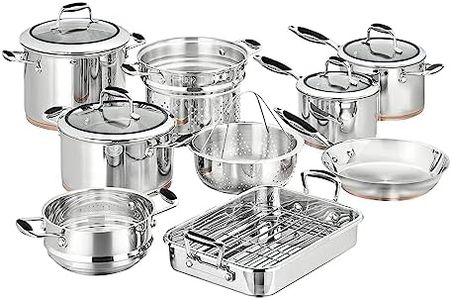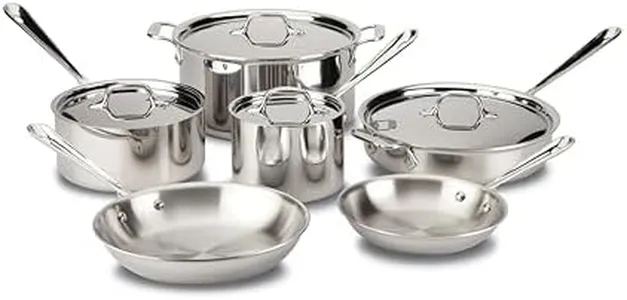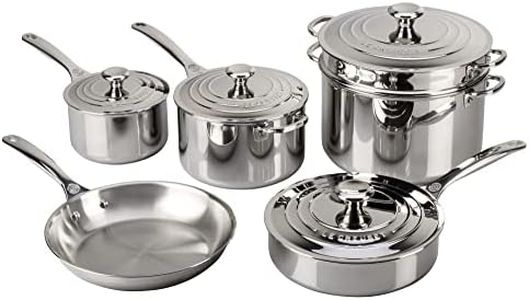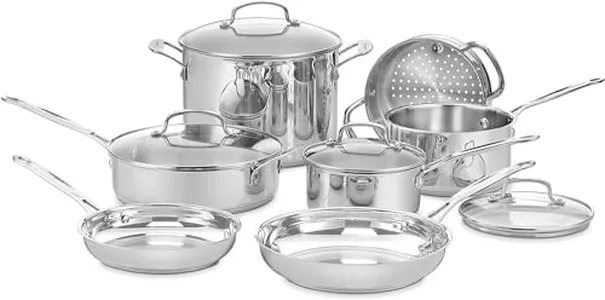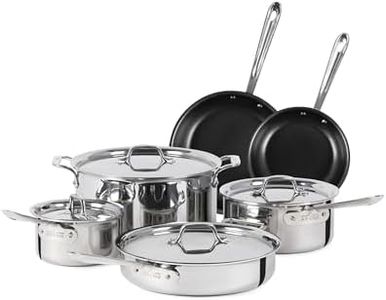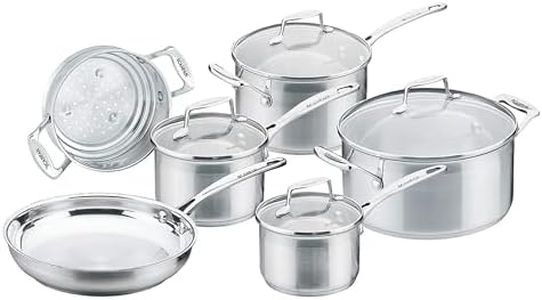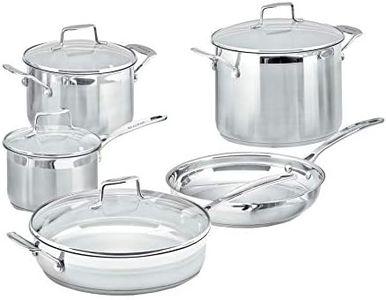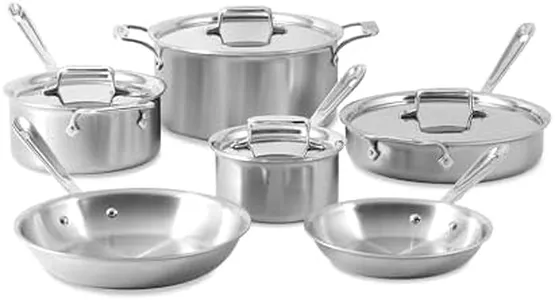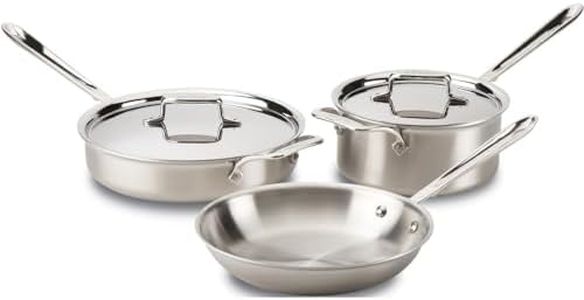We Use CookiesWe use cookies to enhance the security, performance,
functionality and for analytical and promotional activities. By continuing to browse this site you
are agreeing to our privacy policy
10 Best Cookware Sets
From leading brands and best sellers available on the web.By clicking on a link to a third party's website, log data is shared with that third party.
Buying Guide for the Best Cookware Sets
When shopping for cookware sets, it’s important to think about your everyday cooking habits, the types of dishes you like to make, and the sizes of meals you typically prepare. Cookware sets often include a variety of pots, pans, and lids in matching materials, so choosing the right set can help your kitchen run more smoothly and make cooking more enjoyable. Understanding the key factors involved will make it easier to select a set that matches your needs, is easy to maintain, and lasts for years.MaterialMaterial refers to what the cookware is made of—common options are stainless steel, aluminum, nonstick, cast iron, and copper. This is important because the material affects heat conduction, durability, and maintenance. For example, stainless steel is versatile and dishwasher safe, while cast iron holds heat exceptionally well but needs more care. Lightweight aluminum heats quickly but may dent more easily. To navigate this choice, consider how much cleanup you want to do, what kind of cooking you enjoy, and whether you value even heating or nonstick convenience. If you prefer easy cleaning and cooking variety, stainless steel or nonstick may suit you. If you seek great searing for meats or want to use cookware in the oven, cast iron could be ideal.
Number of PiecesThis tells you how many items are included in the set, such as pots, pans, and lids. Some sets are small with a few essentials, while larger ones cover almost any cooking scenario. It’s important because more pieces give you versatility, but storing extra items can take up space in your kitchen. If you cook simple meals for one or two people, a smaller set is likely enough. For larger families or varied cooking, a bigger set might be beneficial.
Heat CompatibilityHeat compatibility means what types of stovetops and ovens your cookware will work with, like gas, electric, induction, or oven use. This is crucial because not all cookware is safe or effective on every stove type. Induction stovetops, for example, require magnetic materials. To navigate this, first check your home’s stove type. If you need to use the cookware in the oven or dishwasher, look for sets marked as oven- or dishwasher-safe.
Handle ConstructionHandles may be metal, plastic, or covered in silicone. The way handles are attached (riveted, screwed, or welded) affects durability and comfort. Heat-resistant handles make the cookware safer and easier to hold, especially when moving hot pans. Metal handles may go in the oven but can get hot, needing pot holders. Consider if you want to put cookware in the oven, how comfortable the handles feel in your hand, and how easy they are to clean and keep secure.
Lid TypeLids can be made of glass or metal. Glass lids allow you to see your food as it cooks, while metal lids are lighter and sometimes more durable. The fit and construction of lids affect how well heat and moisture stay in during cooking. If you like checking on your food without removing the lid, glass is a good option. If you want to avoid breakage and have lightweight lids, metal may be better.
Ease of CleaningThis refers to how simple the cookware is to wash and maintain over time. Some sets are dishwasher-safe, while others need hand washing. Cookware with nonstick coatings often allows for the quickest cleanup but can be more sensitive to abrasion. If you value convenience or have limited time, look for sets labeled dishwasher-safe or with nonstick surfaces. If you don’t mind a little extra care for better results, traditional materials may work for you.

